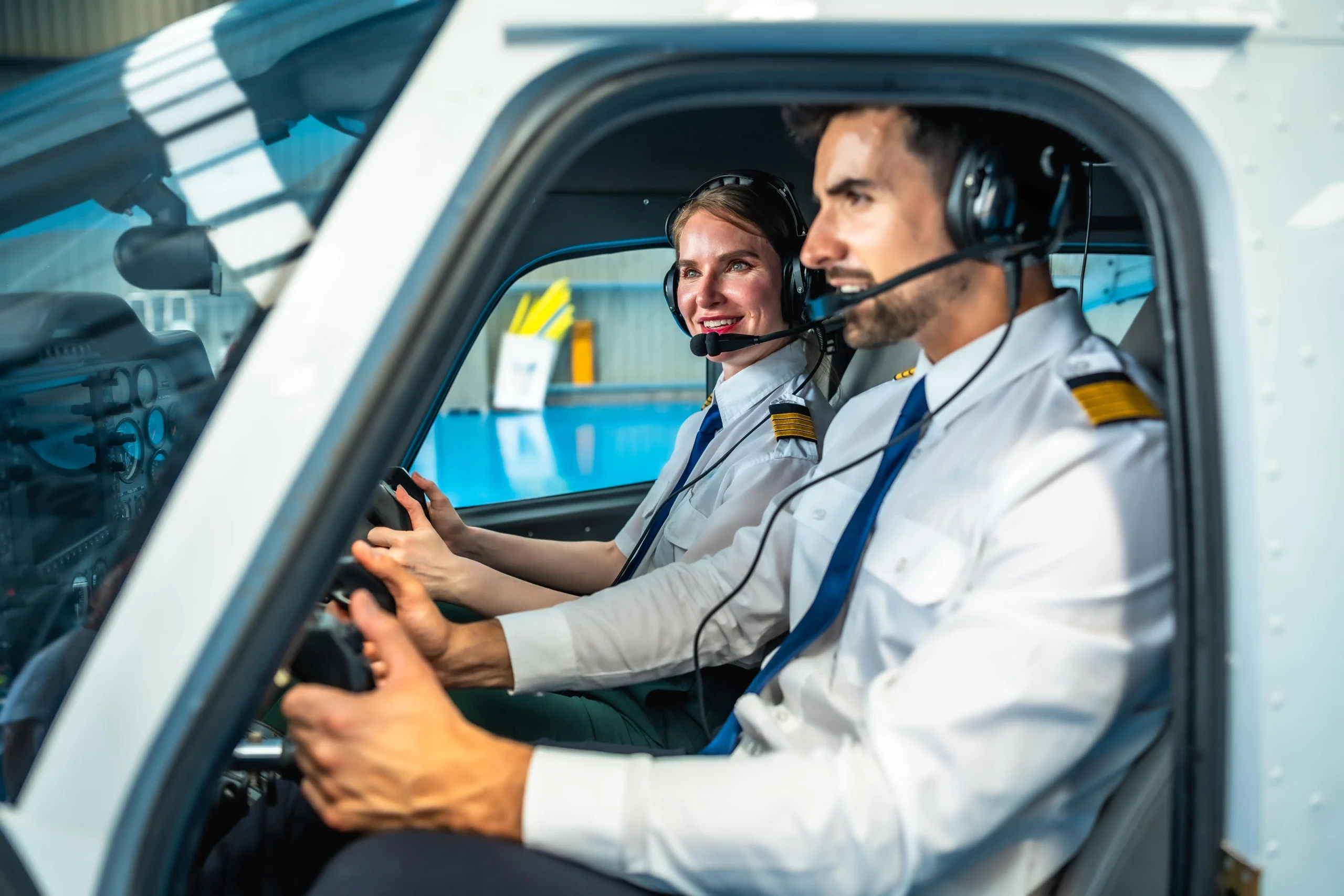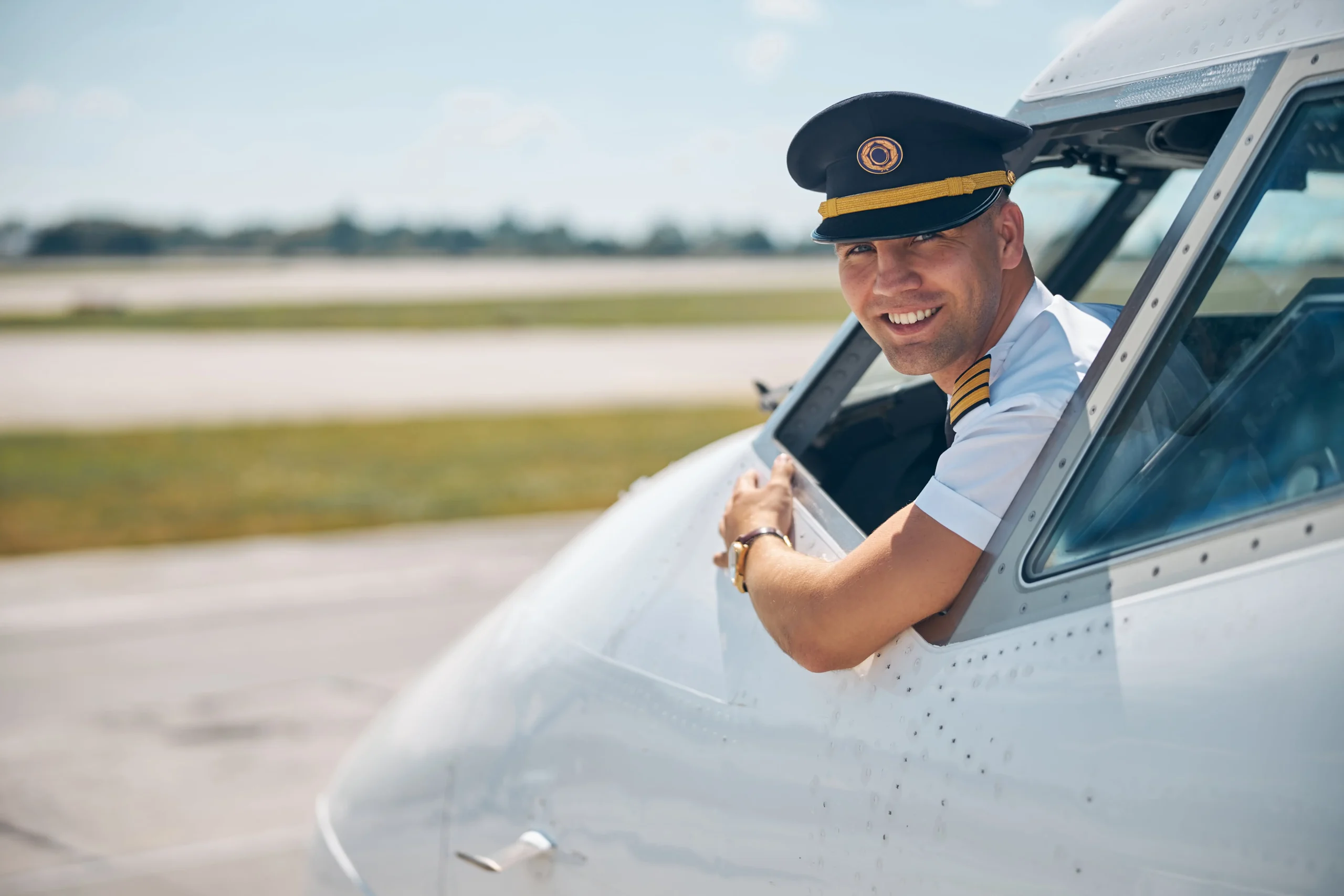There’s never been a more exciting moment to take off into a career in aviation. The skies are calling, louder than ever. With a global pilot shortage looming, Boeing predicts over 600,000 new pilots will be needed by 2042. As seasoned captains retire and airlines ramp up post-pandemic, a new generation is needed to take the controls.
Start training today, and you’ll be perfectly positioned to rise into one of the most in-demand, respected, and well-paid careers in the world.
Picture this: You’re cruising above the clouds, watching the sun rise over the snow-capped Alps or chasing golden light as a thunderstorm clears at 35,000 feet. But that’s all just another day at work. As a pilot, no two days are the same; one week might take you from Rome to Copenhagen and back again, while the next could land you in New York for a layover or give you a night off in bustling Dubai.
And when the uniform comes off? The adventure continues. With attractive salaries and generous travel perks that often extend to your family, the world becomes your playground.
Is It Too Late to Become a Pilot at 30?
The short answer: not at all. Whilst many pilots start training in their early 20s, there’s no upper limit on when you can begin. According to the FAA, the retirement age for airline pilots in the U.S. is currently 65. That gives you more than three decades to build a flying career.
And you wouldn’t be alone. Many career-changers are entering into the aviation sector in their late 20s, 30s, and even 40s. Some are following childhood dreams they set aside, others are motivated by burnout in their current roles, and some simply want more freedom, challenge, and a new perspective, literally.
Take James, for example. At 31, he was managing digital campaigns for a growing tech startup in the UK. But long hours and a lack of fulfilment had taken their toll. Flying had always fascinated him, but it seemed out of reach. Then, during covid, he went on a trial flight at a local airfield, and that changed everything.
“I knew straight away this was it,” he says. “On that flight, I realised I needed to regain a sense of purpose. I wanted my work to mean something.”
James enrolled in an integrated flight training programme and got his Commercial Pilot Licence (CPL) within two years. He now flies regional routes across Europe for a major airline.
“I thought I’d be behind, but there were people older than me in the class. Some had children; some had completely different backgrounds. Once you’re in the cockpit, what matters is skill, not age.”
And for those wondering if it’s worth the investment, the numbers speak for themselves. The average salaries for first officers vary airline to airline but range from €35,000 right up to €190,000 per year, with rapid increases as you gain flight hours and experience. For captains, you can expect a yearly salary between €70,000 right up to €255,000 per year. In some cases this could be significantly more, depending on the airline, aircraft type, and routes flown. Location also plays a massive role, with pilots based in the Middle East and Asia reaching salaries of over $300,000 and even more than $400,000 in the USA. But it’s not just about the pay cheque. Pilots also benefit from industry perks such as annual bonuses, generous pension schemes, loss-of-license insurance, and access to business-class travel rates. Many airlines offer additional incentives like meal allowances, accommodation during layovers, extended vacation time, and even staff discounts on hotels, car rentals, and travel insurance, making the lifestyle not only adventurous but also financially rewarding.
Since qualifying as a commercial pilot two years ago, James has embraced a life filled with new adventures, meaning, and perspective, both literally and figuratively. He now flies short-haul routes across Europe, and the excitement of viewing the sunrise in the sky still hasn’t worn off. “I’ve watched the Northern Lights from the cockpit, seen the sun rise over the Swiss Alps, and spent time off exploring new cities,” he says. Beyond the breathtaking views and the ever-changing backdrop, it’s the renewed sense of purpose that drives him. Each flight comes with responsibility and demands accuracy and teamwork, qualities that give his work real weight. “I feel proud of what I do now. There’s beauty in the routine and challenge in the unexpected. And that’s something I never got from a desk job.”
“At Aerviva, we’re proud to support aspiring pilots like James as they transition and continue in one of the world’s most dynamic and fulfilling careers. There’s a real need for passionate, skilled individuals.” Says Jekaterina Shalopanova, CBO at AERVIVA. “We’re here to help them take to the skies.”

So, how do you become a pilot? Here’s a step-by-step guide.
Step 1: Medical Certification
Before you can start training, you need to get a Class 1 Medical Certificate. This is a thorough physical and psychological check to make sure you’re fit to fly. In Europe, this is done through an Aeromedical Centre (AeMC); in the U.S., through an FAA-approved Aviation Medical Examiner (AME). It is important to do this early; if any issues arise, you’ll want time to address them before investing in training.
Step 2: Choose a Training Path
There are two main routes to becoming a pilot:
- Integrated Training: A full-time, intensive programme that takes you from zero to qualified commercial pilot in about 18-24 months. Ideal if you want to fast-track your career and train alongside peers.
- Modular Training: A more flexible, part-time approach that lets you pay as you go and train around work or family commitments. It also offers the opportunity to carry out each aspect of your training at different organisations. For example, by using a particular flight school to build your hours and attending a ground school to study ATPL theory.
Both routes lead to the same qualifications, so this comes down to personal preference and what suits your lifestyle and finances best.
Step 3: Private Pilot Licence (PPL)
This is your foundation. The PPL teaches you the basics of flight and allows you to fly light aircraft for fun. It typically takes around 45-60 flight hours, depending on the location in which you obtain this licence.
Step 4: Time-Building and Theoretical Knowledge
Next, you’ll build up flight hours (you’ll need at least 200 total for a CPL) and study for your ATPL Theory Exams (or Airman Knowledge Tests under the FAA). ATPL are a set of 13 subjects covering everything from meteorology to flight planning.
Step 5: Commercial Pilot Licence (CPL), Multi-Engine Rating and Instrument Rating (IR)
This is where you learn advanced flying skills and commercial standards. You’ll also train to fly multi-engine aircraft, which are standard in commercial aviation. The IR allows you to fly in a wider range of weather conditions using instruments alone. It’s a must-have for airline pilots.
Step 6: Multi-Crew Cooperation (MCC) and Jet Orientation Course (JOC)
These courses teach you how to work in a multi-pilot cockpit environment and handle jet aircraft systems and procedures.
What Does It Cost?
Training to become a commercial pilot is a significant investment. Costs vary depending on the route you take. Integrated training typically takes 18-24 months of full-time training and can cost anywhere from €65,000 to €140,000, depending on the academy. Modular training is self-paced, so it typically takes longer, but you can expect to complete training in anywhere from 3-5 years. The cost can be as low as €50,000 right up to €140,000, depending on who you choose to train with. However, scholarships and financing options are available, and some airlines offer cadet programmes or sponsorships. Always research thoroughly and choose a reputable flight school.
Final Thoughts
Starting a pilot career in your 30s is becoming increasingly common. With over 600,000 new pilots needed worldwide in coming decades, now is an ideal time to enter the industry. Whether you choose a full-time integrated programme or a more flexible modular route, both paths lead to the same licence. Once you’re qualified, you can expect salaries starting from around €35,000 to €190,000 for First Officers, reaching €255,000 or more for experienced Captains. Alongside strong earning potential, the lifestyle brings travel perks, bonuses, and a sense of global adventure. For example, James took the leap at 31 and now flies across Europe with a deep sense of purpose, pride, and awe-inspiring cockpit views.
If you’re 30 and dreaming of flying, don’t let fear or doubt stop you. Becoming a pilot takes commitment, but it’s entirely achievable, and the timing couldn’t be better. So if you’re ready to chase the dream and one day captain commercial airliners, the industry is open to career-changers, and the demand is strong. You don’t have to be fresh out of school. You just need the drive, the discipline, and a bit of guidance.
So buckle up. It’s never too late to take off.

